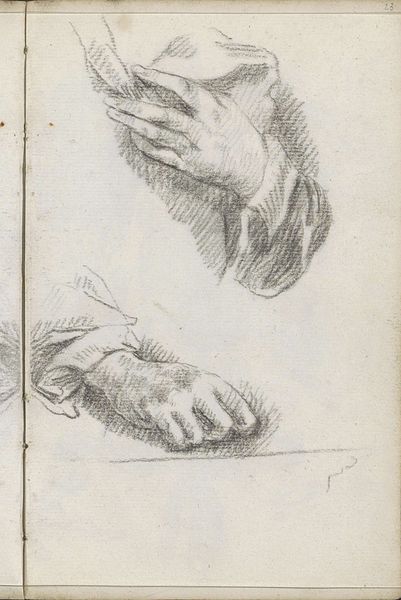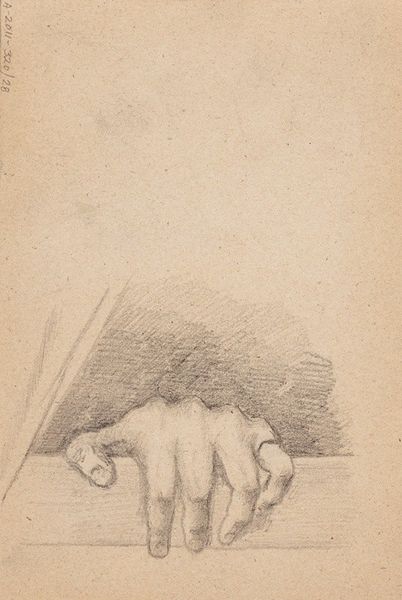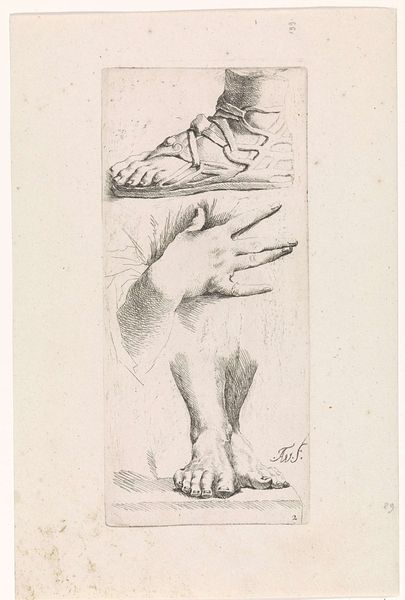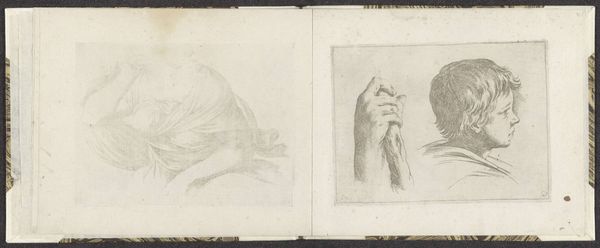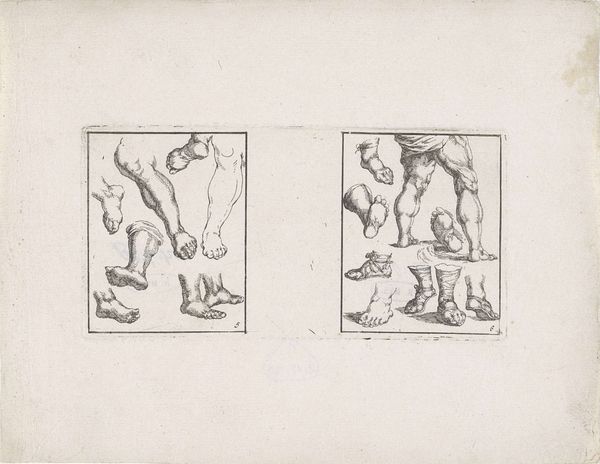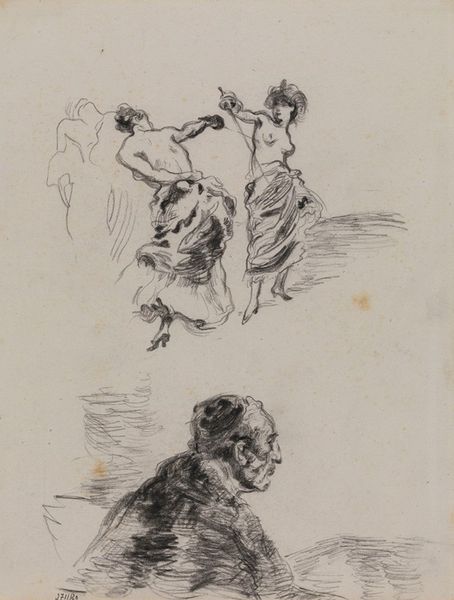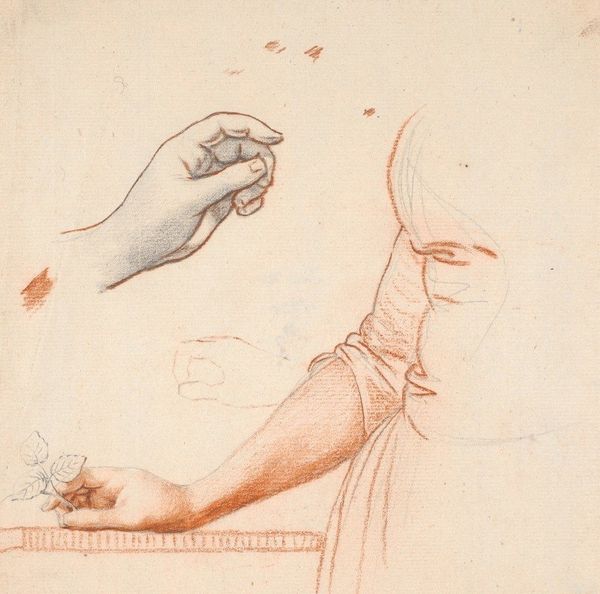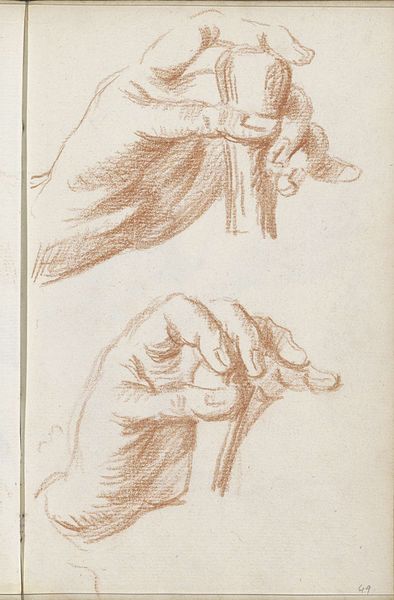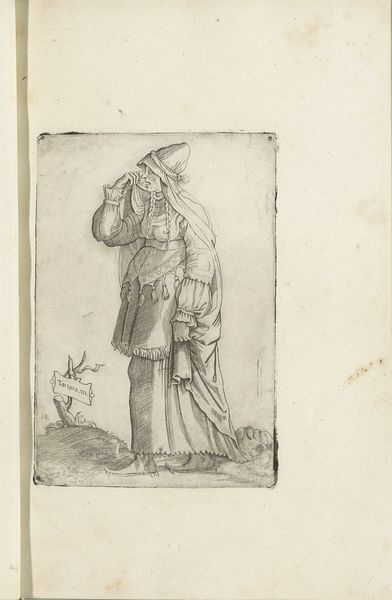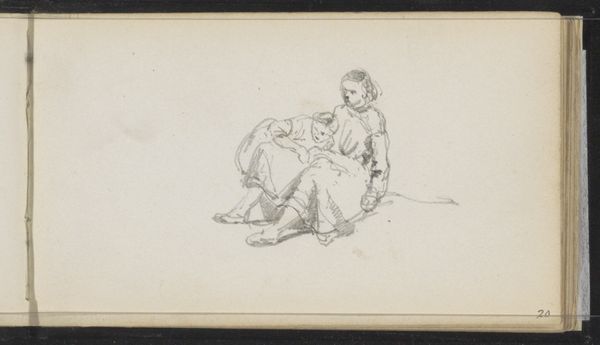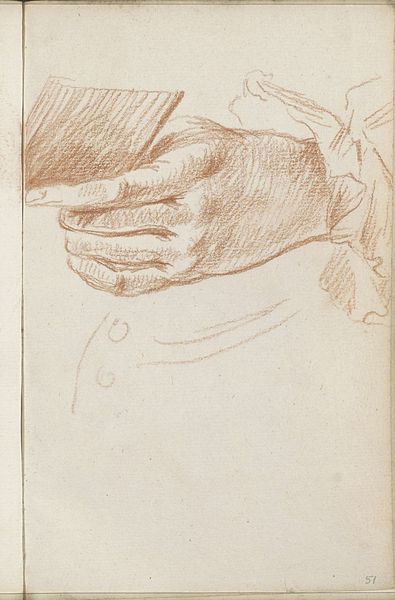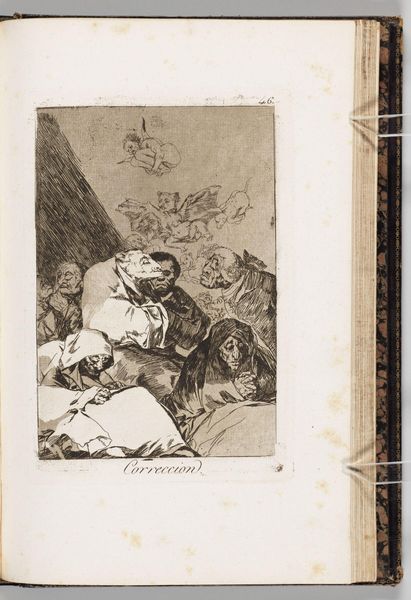
Rechterhand, een boer leunend op een schep en een zittende hond 1834 - 1906
0:00
0:00
drawing, paper, pencil
#
portrait
#
drawing
#
light pencil work
#
quirky sketch
#
pencil sketch
#
dog
#
sketch book
#
landscape
#
figuration
#
paper
#
personal sketchbook
#
sketchwork
#
pen-ink sketch
#
pencil
#
sketchbook drawing
#
genre-painting
#
storyboard and sketchbook work
#
sketchbook art
#
realism
Copyright: Rijks Museum: Open Domain
Curator: Welcome to the Rijksmuseum. Today we’ll be looking at Maria Vos’s “Rechterhand, een boer leunend op een schep en een zittende hond," a pencil drawing on paper, dating from 1834 to 1906. Editor: What strikes me immediately is its intimate, sketchbook quality. There's a large study of a hand at the top, and below, figures that seem almost like glimpses captured in passing—a farmer, a dog. It feels like a page torn from a larger narrative. Curator: Precisely. It’s a page of studies, part of the artistic process. We see Vos’s focus on everyday rural life; it gives us insight into how artists observed and documented their world before photography was widespread. These quick studies are less formal and allow for experimentation. Editor: There’s a sense of observation of working class figures. Consider that the figure of the leaning farmer with a shovel and the attentive dog hint at narratives of labor, loyalty, and perhaps even the bond between humans and animals in agrarian society. Vos is making a social statement. Curator: Absolutely. Her careful, light pencil work reflects a growing interest in Realism during the 19th century. Artists were shifting their focus from grand historical narratives to scenes of ordinary life and Vos seems to be making an argument of class awareness, and focusing her attentions there. The laboring classes become a more central image within fine art. Editor: And the dog's presence! It grounds the scene. What exactly might this choice represent, in the sense of companionship or the farmer's status. Curator: That's what makes pieces like these so interesting - it's left to us, as a community to figure out exactly what these small things could indicate. Editor: Agreed. Thank you for pointing that out! I really value these nuanced elements, a way of grounding history within images that reflect everyday circumstances and lives, helping us build a bigger picture overall. Curator: And it offers a lens through which to consider gender, representation and visibility in Dutch art of the time.
Comments
No comments
Be the first to comment and join the conversation on the ultimate creative platform.
